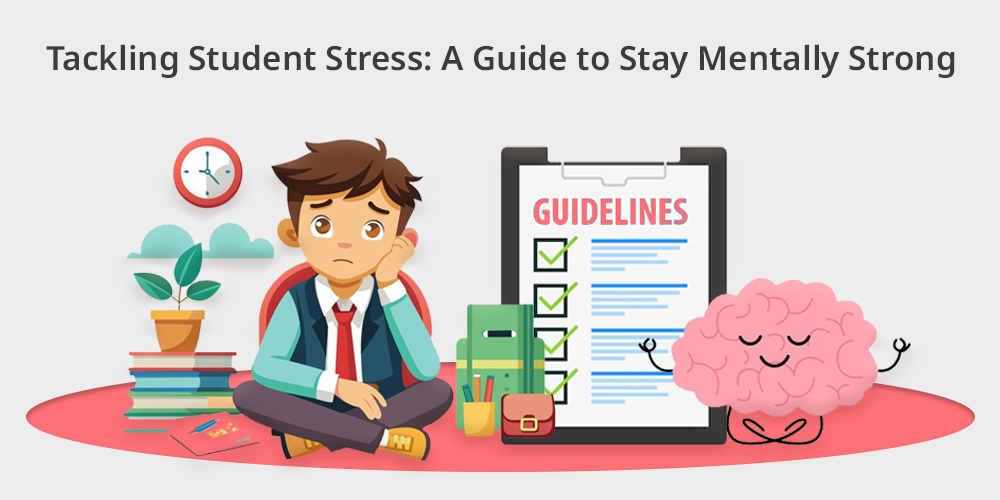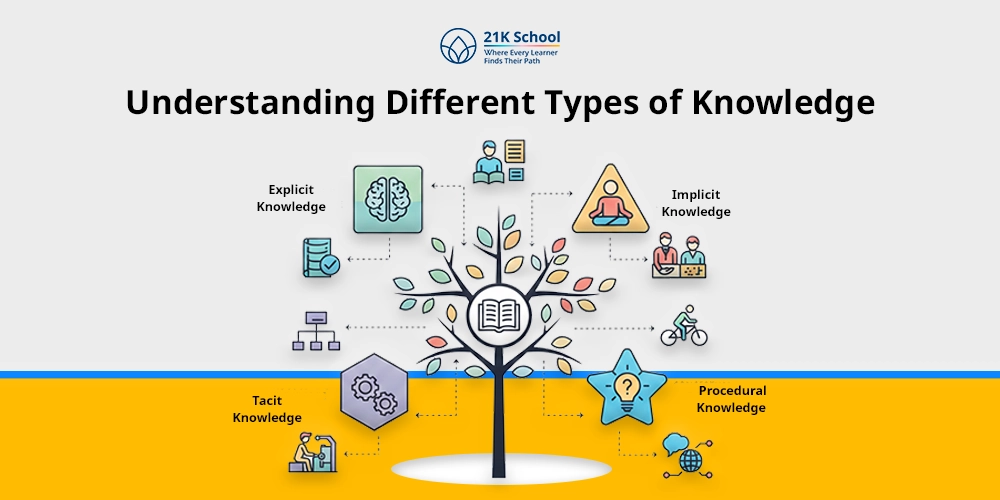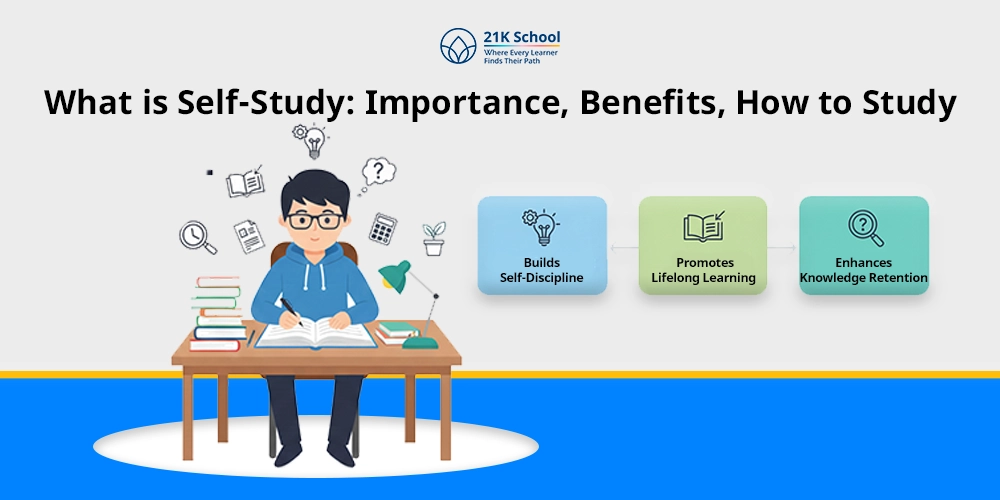
In the 21st century students are facing different kinds of stresses. It takes a toll not only on the student’s mental health but also impacts their overall development. These stresses can be related to academic, social or personal.
Have you ever thought how difficult it is to achieve high academically at the same time become a constant influencer in social media.
Nowadays stress has become a part of life which escalates serious mental health concerns. Here we aim to guide students how to stay mentally strong and focused.
Contents
- 1 What is Student Stress?
- 2 Symptoms of Stress in Students: Key Points
- 3 Causes of Stress in Students in 21st Century
- 4 How Stress Impacts Students in Daily Life?
- 5 Student Stress Scale: Measure Your Mental Health
- 6 Exam Stress: What Students Deal With
- 7 Navigating the Stress Management Activities for Students
- 8 Stress Relief Games for Students to Stay Calm
- 9 Stress Management Techniques for Students
- 10 Conclusion: Stay Calm and Study without Stress
What is Student Stress?
Student stress refers to mental and physical challenges, a student feels due to school work, social life or personal issues.
Stress is a common reaction to difficult situations, but if it is too much or too long it can hinder mental health and physical strength.
Symptoms of Stress in Students: Key Points
Recognising stress in initial days is beneficial for students to overcome the situation. Some common symptoms of student stress includes:
1. Emotional Symptoms
Emotional symptoms of stress in students refers to a feeding of depression, irritation and anxiety which leads to difficulty in concentration.
In this case students feel hopeless and their mood swings reflect on their face.
2. Physical Symptoms
Physical stress in students signifies various health issues. Some common symptoms to determine are headache, digestive issues, fatigue, insomnia and many more.
Due to physical stress students feel like a patient and unable to perform daily routine.
To know how to perform daily tasks timely, learn more on study routine techniques.
3. Behavioral Symptoms
Behavior symptoms in stress reflect the changes in habits of students. Some common behavior symptoms are fidgeting, nail-biting, skin picking and overeating or under-eating.
Remember ignoring these stress symptoms can adversely affect both academic achievements and personal life.
Causes of Stress in Students in 21st Century
In the 21st century the cause of stress in students is different and complex. From academic pressure to personal challenges, anything can be the reason for students’ stress.
- Heavy Workload and Expectations: Academic stress causes such a heavy workload and high expectations from students to excel in a competitive environment. To alleviate student homework-related stress, teachers and parents can read 10 Homework Tips to Become an A+ Student.
- Student Debt and Tuition Fees: Students who are in debt or need to pay tuition fees get financial stress. This can also affect students’ academy activities.
- Body Image and Appearance: Body image and appearance is one of the reasons students stress in the 21st century. Having extra slim or chubbiness leads to anxiety and over thinking.
- Time Management: Poor time management is a combo of academic pressures, extracurricular commitments, and a lack of self-discipline in students. Managing time is essential for students to stay away from stress and meet the daily target to achieve goals.
- Decreased Socializing: Reduction of social interaction and activities leads to decreased socializing. Absence in school functions or participation in programs etc are symptoms. This generates anxiety and awkwardness for students which can be the cause of stress.
How Stress Impacts Students in Daily Life?
Stress impacts students’ daily life from affecting their academic performance to social interactions and mental health.
Some common daily life students stress includes:
- Academic Stress: Academic stress impacts students’ yearly performance which reduces the ability to focus and retain information. Academic stress involves homework stress, results stress, exam stress and many more. This leads to low marks and difficulties in studying.
To reduce stress and help students to score better, read on this bog How to Get Good Marks in Exam? - Mental Health: Anxiety, depression, over thinking, and other mental problems lead to mental or chronic stress. This effect on students’ overall performance.
- Physical Health: Stress is a big reason to damage the physical health of students. Problems like body pain, headache, sleeping cycle got affected. Improve students physical health with the popular gross motor skills activities.
- Social Relationships: Surrounding with stress hinders the social relationships of students. Relationships with parents, friends and classmates are also damaged.
You can also read about social emotional learning activities for high school students to improve social relationships.
Student Stress Scale: Measure Your Mental Health
Student stress scale is a tool to measure the level of stress an individual is experiencing. It helps to identify the problem and track the impact.
This student’s stress scale helps both in research purpose and students health understanding. It is a valuable resource for human kind.
There are different kinds of students’ stress scales to measure the level of stress.
Some common names are Perceived Stress Scale, College Student Acute Stress Scale and Depression Anxiety Stress Scale-21.
1. Perceived Stress Scale
PSS is a psychological tool majorly used to measure how individuals perceive the stressful events in students’ lives.
It was created by Sheldon Cohen. It assesses how unpredictable, uncontrollable, and overloaded individuals find their lives.
- Use: Commonly used for stress research of students, teachers and employees.
2. College Student Acute Stress Scale
CSASS is an instrument designed to measure short term acute stress. This is experienced by most of the school and college students.
This can happen due to academic, personal and social reasons.
- Use: It helps student councillors or universities to identify immediate stress. A mental health program is ideal.
3. Depression Anxiety Stress Scale-21
Depression Anxiety Stress Scale-21, a self-report questionnaire which is designed to measure the emotional states of depression, anxiety, and stress.
- Use: It is used by mental health professionals in clinic and non clinical areas.
Exam Stress: What Students Deal With
Most of the students worry about their exams no matter how easy or hard, even if they are fully prepared or sometimes not, stress is always there.
However, sometimes even a student who is good at a particular subject gets bad marks due to stress, anxiety and nausea.
Understanding and managing exam stress with proper strategy can be an effective solution.
And this can be done by time management, practicing mindfulness, seeking social support, and maintaining a healthy lifestyle.
If you are stressing out in study, learn the steps and importance of time management in exam.
To manage stress effectively students need to be busy in some physical stress management activities. This will prioritize your health.
To know in detail here’s some stress management activities for students:
1. Exercise
To manage stress students can engage in physical exercise such as walking, stretching, running, jogging etc.
This mind-body practice helps in concentration and regain strength to conquer any problem.
2. Deep Breathing
For stress management, deep breathing is an ideal option. This can be done with slow breathing focusing on the sensation of the breath.
Adding deep breathing in students’ daily routine will help them in quick stress reduction.
3. Yoga and Meditation
Yoga has been a powerful activity for stress management for many years. Start with muscle stretching and do various poses like bridge pose, and cat-cow pose.
This will reduce dress anxiety and relaxation especially on exam days.
4. Healthy Habits
Physical activities not enough for stress relief try out a healthy food option for better results.
Stress management can be done by incorporating an accurate routine of a healthy diet and adequate sleep.
You can also read: how to cope with study stress
Stress Relief Games for Students to Stay Calm
Stress relief games help students to stay calm and engage in other activities. This will help them to relax and distract from stress.
Various physical games ideal for stress are:
1. Painting and Coloring
A fun and creative way to handle stress is free hand painting and colouring. This will help students to distract from stressful situations.
- What To Do: Try stone painting, Q-tip drawing or feather drawing.
2. Bubble Wrap Game
Students can pop bubble wrap to release tension and ensure a stress free time without any preparation.
- What To Do: sit in a calm place and pop as much bubble wrap you want.
3. Relaxing Puzzler
Relaxing puzzler is a calming game often played for focus. The game starts with solving puzzles or assembling images with concentration.
- What To Do: Assemble the small pieces to create a picture.
Stress Management Techniques for Students
- Prioritize Sleeping: To manage stress consistent with your sleeping schedule. This can be done through limiting your screen time and going to bed at the same time everyday.
- Practice Mindfulness: Different kinds of mindfulness techniques like meditation and white music can help you in relaxing. Students may also go through: mindfulness activities for the classroom.
- Eat a Healthy Diet: By prioritizing food intake students can stay calm and composed. Stay hydrated, reduce coffee and sugar, avoid smoking or alcohol.
- Connect with Others: Connecting with people helps students to distract from stress and provides a happy environment to cope.
Conclusion: Stay Calm and Study without Stress
Stress is a part of life which can’t be eliminated but students can control it throughout their life.
By recognizing symptoms, causes and performing activity and games anyone can live in a healthy and better environment.
If you are someone going through academic, emotional, social or personal stress it’s time to balance and prioritise your health first.



